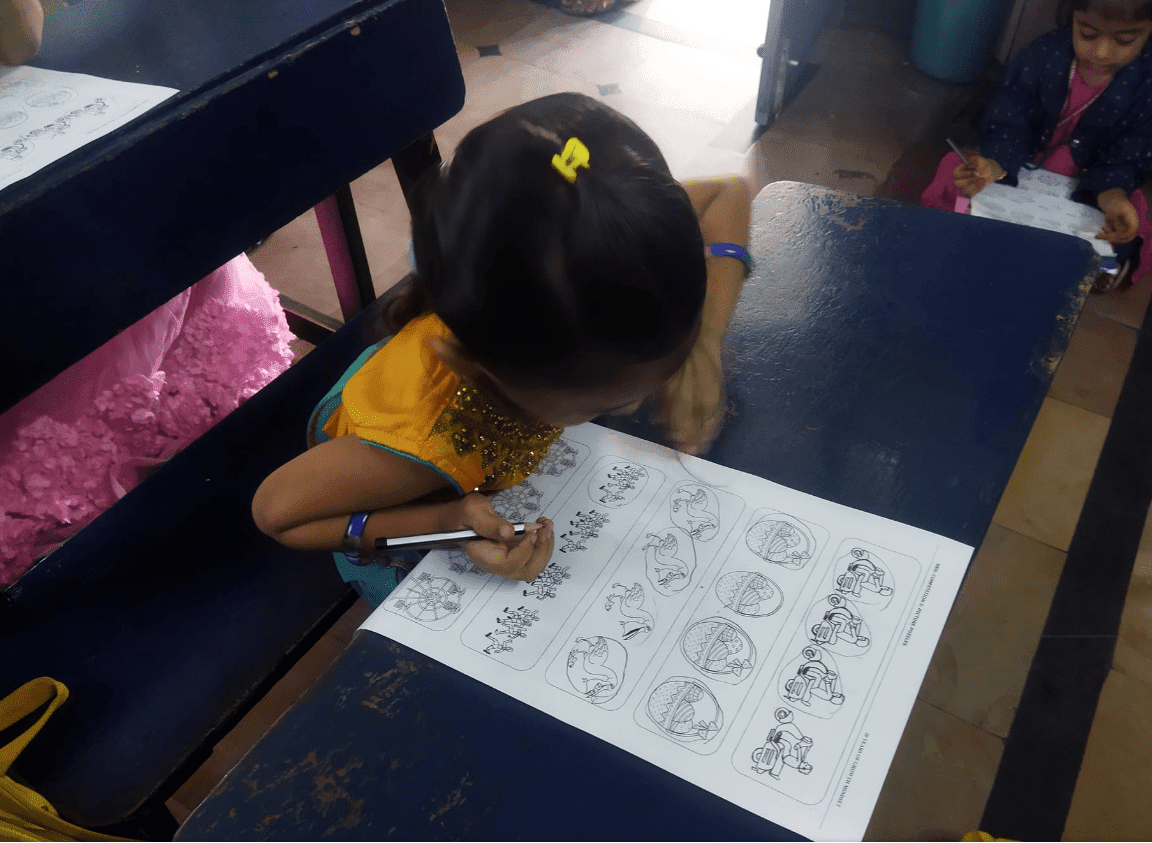Every parent and teacher knows that getting kids excited about learning can sometimes feel like a puzzle without all the pieces. But fear not, because these strategies can help ignite that spark of curiosity and motivation in primary school children.
10 Tips to motivate primary school kids to learn in 2023
Understanding what motivates your child to learn is the key to unlocking their potential and fostering a lifelong love for learning. Let’s dive into some easy and effective ways to keep those young minds engaged & eager to explore.
1. Make Learning Relevant and Fun:
Think about the last time you learned something new. Chances are, it was something that piqued your interest or was applicable to your life. The same principle applies to children. When they see that what they’re learning has a real-world connection, their curiosity is naturally piqued. So, try to link lessons to their daily experiences. For instance, if they’re learning about measurements, use cooking to teach fractions or take them on a nature walk to explore different plant species. Learning through hands-on activities and games not only makes lessons memorable but also enjoyable.
Children are more likely to be drawn towards things that are new to them, as it fills them with a sense of wonder, and hence emits a feeling of fun. Incorporating fun into the learning process not only keeps them engaged but also helps them associate learning with positive emotions.

Additionally, don’t underestimate the importance of creativity. Let them use art, music, or drama to express themselves and what they’ve learnt. Children are also explorers, hence they are very likely to grasp onto concepts via hands-on learning. When you provide them with opportunities to engage with their senses, you’re tapping into their innate curiosity. This approach nurtures a genuine interest in learning and equips them with skills that reach far beyond their classroom walls.
Also read: The Importance of Reading to Your Children
2. Encourage Exploration:
Children are naturally curious beings. They want to know how things work, why they happen, and what the world is all about. Encouraging exploration in children is like planting seeds of curiosity that can grow into a lifelong passion for learning. Encourage this curiosity by allowing them to explore their interests. Provide access to a variety of books, art supplies, puzzles, and educational apps. Let them choose what they want to learn about and be there to support their exploration. When they feel empowered to pursue their interests, they’re more likely to be motivated to learn on their own.Technology and the access to unlimited data can be a huge plus point for this. Educational apps, websites, videos, etc can offer a wealth of information in a fun and interactive way.
Also read: 10 Activities That Will Encourage Curiosity In Kids
3. Celebrate Achievements, Big and Small:
Imagine the feelings of satisfaction and pride when you get recognized for something you worked hard for. Children feel the same way, if not more intensely. Celebrate their accomplishments, whether it’s mastering a new skill, completing a challenging puzzle, or finishing a book. Applaud their efforts and highlight their progress. Small rewards, like stickers or a special treat, can make a big difference in boosting their self esteem and reinforces that their ideas are valued and acknowledged.
While it’s natural to celebrate the bigger achievements, one should not ignore the small ones. Progress is a series of small victories, and recognizing these steps requires constant motivation. This approach teaches them the importance of progress, regardless of its size.
4. Create a Positive Learning Environment:
Imagine trying to concentrate in a cluttered and chaotic room – it’s tough, right? A clean, organized, and comfortable learning space can make a world of difference in motivating your child to learn. Set up a dedicated area with all the necessary supplies, good lighting, and minimal distractions. When they have a welcoming space to focus on their studies, they’re more likely to feel motivated and ready to learn. Allow them to personalize their learning space. Let them choose decorations and other quirks that add a personal touch and make the place uniquely theirs. When they feel a sense of ownership to their area, they’re more likely to use it more often.
5. Foster a Growth Mindset:
Children need to understand that intelligence and abilities can be developed over time. This concept is known as a growth mindset. Encourage them to embrace challenges and view mistakes as opportunities to learn and improve. When they believe that effort leads to improvement, they’re more likely to stay motivated even when facing difficulties.
6. Make Learning Social:
Learning doesn’t have to be a solitary endeavor. Arrange study sessions or group activities with their friends or classmates. Collaboration and healthy competition can make the learning process more engaging and enjoyable. When children see their peers excited about learning, they’re motivated to join in on the fun.
Also read: How to Raise Socially Confident Kids: Tips and Strategies
7. Set Realistic Goals:
Goal-setting is a powerful tool for motivation. Sit down with your child and help them set achievable short-term and long-term goals. These goals could be related to academics, hobbies, or personal development. As they make progress towards their goals, their sense of accomplishment and motivation will soar.
8. Introduce Variety:
Monotony can lead to boredom, which is the opposite of motivation. Introduce variety into their learning routine by incorporating different subjects, formats, and activities. Rotate between reading, writing, hands-on experiments, and creative projects. This keeps their learning journey fresh and exciting.
9. Be a Role Model:
Children often look up to their parents and caregivers. They observe and behave from your actions, behaviors and attitudes. If they see you valuing education, being curious, and learning new things, they’re more likely to follow suit. Share your own learning experiences and successes with them. This not only encourages them to learn but also strengthens your bond. Engaging in activities together can also be a huge reinforcement, whether its watching an educational docu-series, solving puzzles, or exploring a new hobby; involving them in your learning journey can make it a shared and enjoyable experience.
Know that learning does not always consist of smooth sailing, there will always be setbacks and challenges. When you encounter difficulties, demonstrate persistence and a positive attitude towards problem solving. Let this be an example for the children that setbacks are opportunities to learn and grow.
Sometimes, your child may come up with something that may be completely foreign to you, however instead of brushing it off, channel their interests into your own and offer a willingness to learn about it. Openly admit if you are unaware about something, this teaches the children that it’s okay to not have all the answers and that learning is about progress, not perfection.
10. Offer Autonomy
Autonomy in learning involves allowing children to make decisions about their educational journey. Giving children a say in their learning process can significantly boost their motivation. Let them choose some of the topics they want to explore or the activities they want to engage in. When they feel that they have a say in their education, they become more invested in the process. When you offer autonomy, you’re offering critical thinking and decision making skills. Encourage them about why they want to learn something, how they plan to do it, and what resources they need. These skills go far beyond any classroom.
While autonomy is important, it’s essential to find a balance between structure and freedom. Provide guidance and boundaries to ensure that their choices align with their career goals and overall educational development.
In conclusion
Understanding what motivates children is the key to helping them thrive academically and personally. Dr.Kishore’s Ratnam School in Nellore has successfully applied certain strategies to motivate the students effectively. By making learning relevant, fun, and tailored to their interests, you can create an environment where their natural curiosity and love for learning can flourish. Remember, every child is unique, so feel free to mix and match these strategies to find what works best for your little learner. With your support and a sprinkle of creativity, you’ll be well on your way to nurturing a motivated and enthusiastic student.


